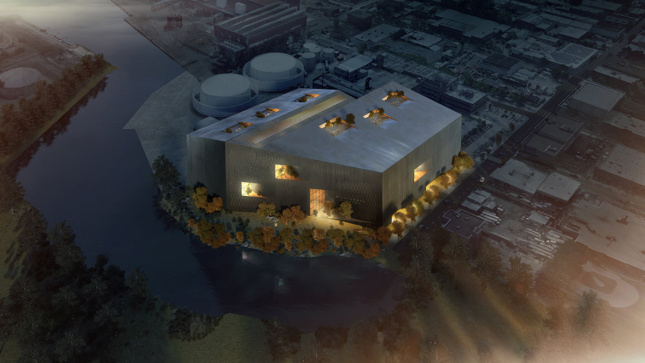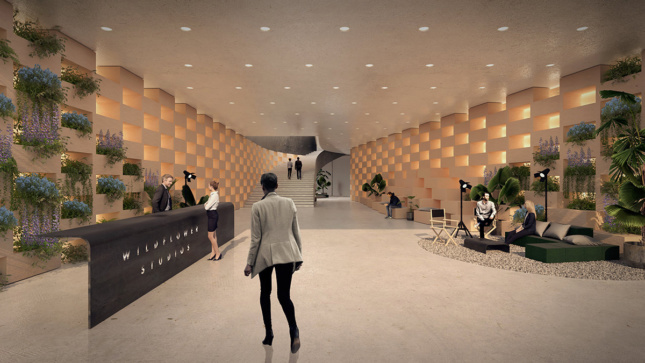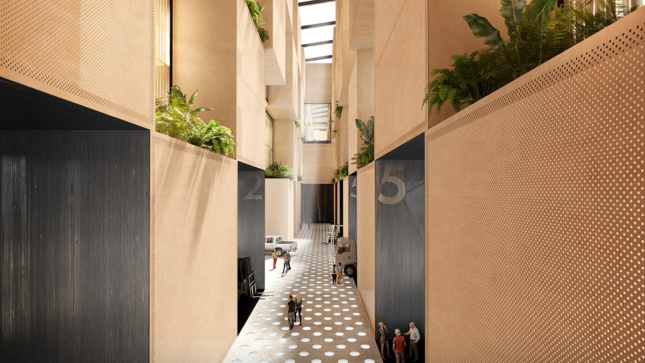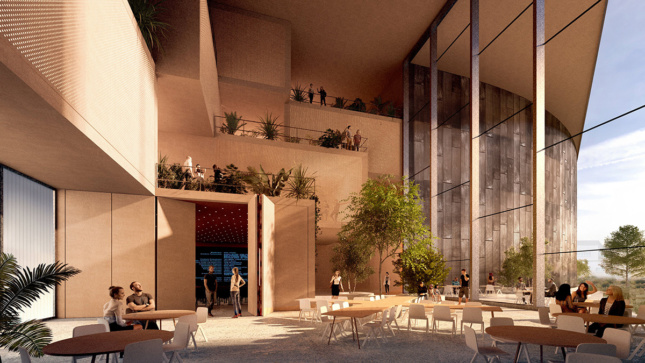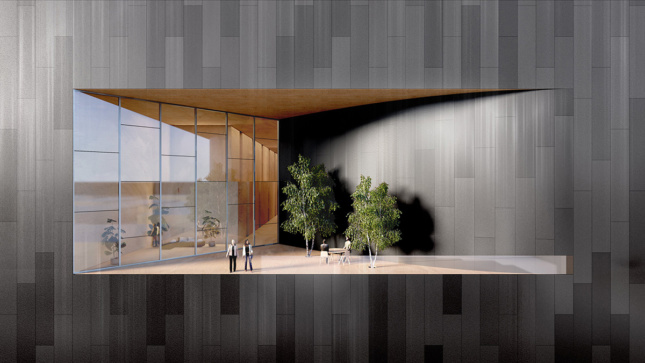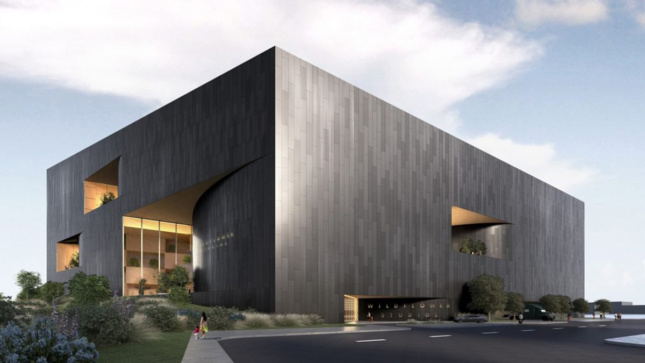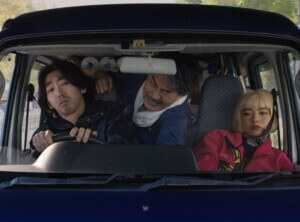It’s no secret that New York’s film and television industry is booming, or that there’s been a recent real estate push for investment in spaces for the creation of shows, movies, and more.
Robert De Niro has thus enlisted the help of the Bjarke Ingels Group (BIG) to design a “vertical village” for film in Astoria, Queens. Initial renderings were released this week, unveiling a 650,000-square-foot facility dedicated to film, television, and AR/VR atop the former home of a Steinway & Sons Piano Storage Facility.
The $400 million project was first announced in July when a group of investors, including the actor and his son, purchased the five-acre plot along Steinway Creek in the northwestern edge of Queens. Promising to bolster the city’s fast-growing production economy and provide over 1,000 daily union jobs, Wildflower Studios will be a “true destination film campus,” said Adam Gordon, president of the company, in an interview with The New York Times.
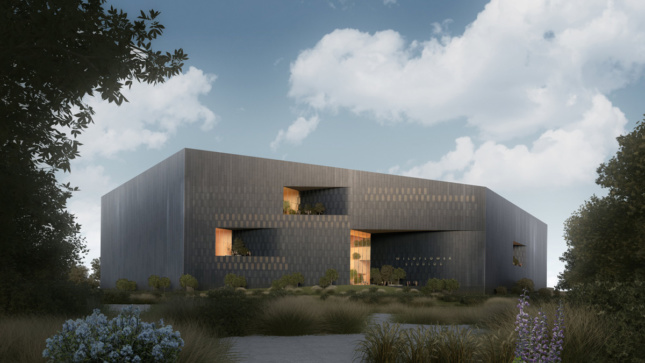
BIG’s grand vision for the grounds, sited at 87 19th Avenue, so far includes a singular structure that will house interconnected spaces for offices, production-support, stages, and lounges. Because the building will be located within a rather industrial part of Astoria and overlooks part of the East River, Wildflower is required to provide public water access and land conservation where necessary.
In a statement, Bjarke Ingels said the spatial constraints made it tricky to design the project: “We were challenged by Wallflower to distill all the physical, logistical, technical and experiential aspects of film production into a one of a kind vertical village for film.”
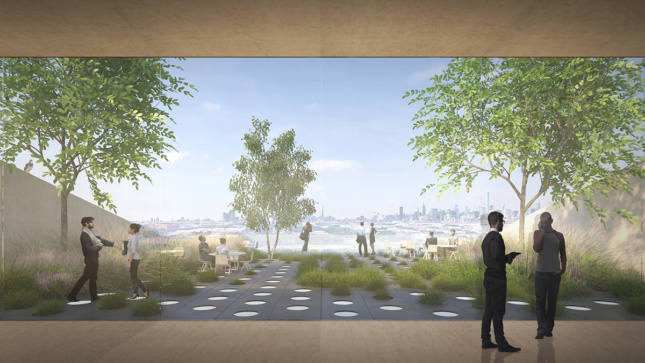
Most studios in the city, from Steiner in the Brooklyn Navy Yard to Silvercup in Long Island City, are located on large plots of land within warehouses that have long-existed as the homes of manufacturing outlets. These unassuming properties include open floor plates, ample oversized doors and elevators, as well as little access to light—perfect for film production. BIG’s design for Wildflower is clearly seeking to strike a different tone as it uses natural light spilling in from exterior cutouts, greenery scattered from the lobby to the lounge, and views of the adjacent water.
For De Niro, this strategic focus on design symbolizes the studio’s commitment to production spaces where creatives want to work and are proud to be every day. “Completion of this project ensures that future generations of producers, directors, writers, and storytellers will play a vital role in filmed entertainment in New York for years to come,” he said in a press release.
So far, no date for completion has been announced but the plans are now being filed with the New York City Council.






